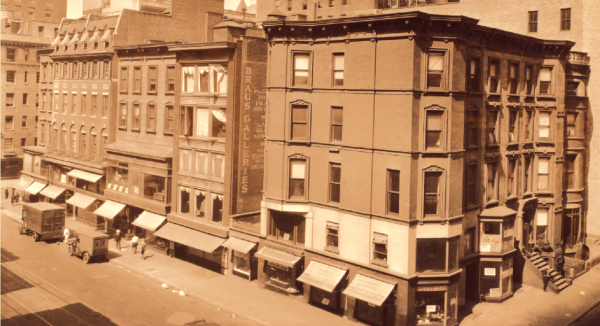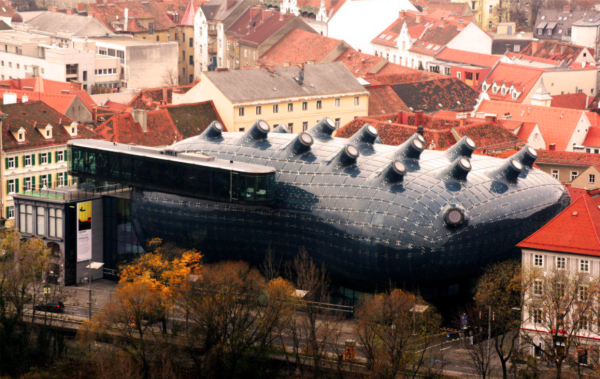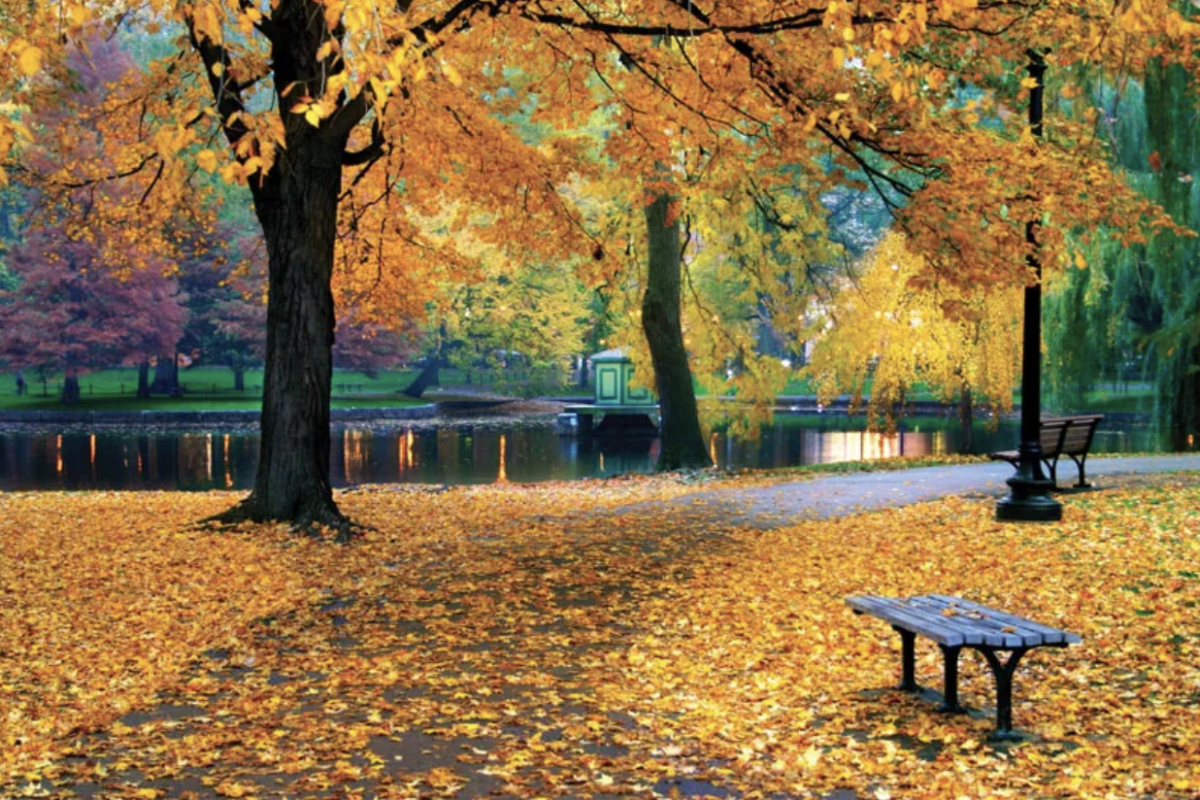Disclosure: The title is based on “The Death and Life of Great American Cities” By Jane Jacobs 1961
Architecture is composed of a balance between utility and beauty; a building must serve its community and fulfill its purpose while adding to the urban environment and creating art that integrates into the landscape. “That which is complete, flawless, and has attained its purpose,” as Aristotle defined perfection. Granted, perfection is a high bar and any perfect architecture deteriorates nonetheless, but the age of modern architecture has forgotten perfection, it has forgotten good architecture and it has forgotten decent architecture. The life and death of beautiful architecture hinges on these decades of architectural history; it must not be squandered for meager means.
Architecture has a stunning history, as we all know, though this piece may evoke images of humanity having forgotten how to build grand beautiful architecture, I want to dispel the myth that the architecture of past centuries was wholly beautiful. Most architecture was purely functional and often not built to last; there were not the resources nor the ingenuity to build outside of the single function a building needed. The grand works that characterize past centuries of architecture are not emblematic of all architecture, they are simply what was built to last so what remains to be seen, while the majority was torn down or deteriorated. This perception is called Survivorship Bias. Neoclassical icons such as the Pantheon of Paris or Buckingham Palace were built to the standards of an aristocracy infamously regal and finely detailed. Such neoclassical architecture built for the epoch of society, though beautiful, has never constituted both accessible and beautiful architecture.
The Brownstones of New York are emblematic of a diverse cultural era, a symbol of New York and neoclassical architecture that glamorizes the city, and now house the high income of the city. However, the forgotten history of Brownstones reveals a wholly different story. “While they would later be viewed as authentic, contemporaries dismissed brownstones as modern and artificial,” wrote Suleiman Osman, a professor of American studies at George Washington University, in his book The Invention of Brownstone Brooklyn. Architects of the time had criticisms eerily similar to those of modern architecture, deeming them mass-produced and profit-seeking, slandering the architecture of New York as a result of too much industrialization. Despite these comments, it thrived; it was cheaper and it met the need for housing at the peak of a wave of 3 million immigrants in the 1850s. The Brownstone reveals how beauty was less of a priority in the past than its veneer shows; it followed the profit incentive due to the production of resources suited for a brownstone becoming cheaper with industrialization.

The profit drive has always driven architecture, something that is not inherently bad. There were moments where beautiful architecture in the neoclassical sense was accessible to the masses as urbanization had led over 50% of the US population to cities by the 1920s. Cities were flawed and often overrun or had insufficient housing, but beautiful nonetheless. The profit incentive had only strengthened, but the beauty of architecture was not born out of the community but the aristocrats, hence the rise of Art Deco, symbolic of monumental power for the few. Sadly, during this era, cracks began to emerge in the facade. The car dominated the urban environment as the Model T became increasingly affordable, and the slow destruction of Art Deco and neoclassical began to build for the automobile, dismembering the urban environment and giving way to a new architectural demon.
The first Levittown was created in 1947, full of cheap units of suburban housing. Identical, car-oriented, bland homes became standard in an environment unwilling to adapt. Mostly white people fled the cities in what became known as white flight towards the Suburbs, fostering what would become the ideal of the American dream. With this came the shift away from housing as a unit in a system, but as a system itself, independent from the larger environment or economy because at least physically it was, along with a commodification of housing that made the profit incentive incremental to housing in its entirety. Granted, there was a severe need for cheap housing as the 40s posed one of the worst housing crises the U.S. ever faced, but the consequences of suburbs have been long-lasting. Suburbs have a lifeless quality being completely identical units that sprawl across the landscape. In comparison to the vibrant neighborhoods prevalent across Europe and, before this period the U.S., they are a butcher of architecture. No variety, no ornaments, no walkability, no life.
The march of the highway and the automobile has continued for decades, only beginning to peak now, but the suburb is not the only place where the dynamics of architecture have been gutted. Even urban centers such as Los Angeles are car-oriented, detracting from the environment with more distance between buildings, noise pollution and traffic, and their architecture has transformed into something more reminiscent of brutalism, concrete blocks with few details and little care for the environment or community. Much of modern architecture lacks simple concepts such as cills, which prevent rain from leaving harsh grey marks on concrete buildings. Modern architecture in the city also tends to pander to the ego of the architect. Every architect dreams of being the next Frank Lloyd Wright, but forgets they are not gods of their environment. This is where the concept of Curb Appeal applies, architects build fanciful buildings integrating modernist principles that may look good individually but have no care for how they integrate into the urban environment, creating too much variety, a contrast to the dull identical nature of suburbs. One reason why architects now do this is that we have the engineering capabilities and resource affordability to create far more and be capable of structures we could not before. Architects have decided to do this for the sake of doing, pursuing increasingly outlandish and fanciful architecture to leave a footprint on the landscape, be unique and potentially become an icon of architecture.

Architecture evolves, as it has throughout history. In this architectural era, there is a path toward a better form of architecture. To understand the path forward, first, we must understand four principles incremental to beautiful architecture. Proportion of windows, which vary in size depending on warmer or colder environments. The larger the window size, the more significant the thickening. Too many windows, made too large, will lack the space for the base material to withstand or the thickening to take hold making for an odd appearance, like eyes drawn too large for a face on a painting. Symmetry is an easy idea, windows and doors within equal distance to each other, and repeat elements in your design that ought to be. Stability, like a Torii gate, a prime symbol of stability, or pillars typical in neoclassical buildings, sometimes are not even necessary but when added add to ornamentation and evoke ideas of security and stability within our mind. With monumental construction comes the idea of ornamentation, which adds variety to the street facade, making a large building consistently interesting despite its size.
There is an approach that has the potential to transform urban environments for the better called Vernacular architecture. This school of thought revolves around the idea of local or regional construction, adapted highly to the area and the functionality of the building, yet often merging the functionality with beauty, and not being excessive in ornamentation, achievable at the community level and though difficult in car-oriented environments, thrives in more walkable spaces. The approach requires adjustments as it often demands resources from the local or regional area too, and simple economics often provides cheaper resources within the larger economy but would work excellently. Extending this approach is Incremental architecture. This still retains the idea of a building being its own system, but discards the commodification of the building, instead considering a building as an adaptable and accessible space, suited to morph into mixed-use spaces and suit the needs of future inhabitants. This form of architecture demands a longer lifespan and integrates better into the community, being flexible to its needs. Outside of this is the matter of monumental builds, skyscrapers and massive feats, which can be beautiful and can be iconic, but may teeter on the edge of dystopian, glass towers. So when building monumental it is crucial to build ornamental. Adding features that contribute to the four principles of architectural beauty will transform a monumental building while adding little in the case of cost, likely around 1-2%.
When I opened the piece I evoked the ideal of architectural perfection, it sounded like a high bar, an impossibility because perfection is not possible from imperfect humans. However, this is precisely the reason why we can achieve it; architecture is simply a mirror of the human condition. The four principles are not laws of the universe but those of beauty, something conditional to how imperfect humans perceive the world. By fulfilling these desires it is already perfect because perfect architecture need not be a masterpiece by Frank Lloyd Wright, it need not be a monument in a city, it must only fulfill its use and community, and be beautiful. Architecture in the 50s was built like it had reached the end of history, but it evolved past that, and it will continue to evolve past today. We can only hope to guide it in the direction that will benefit the urban environment and community it must serve, breathe into it life, knowing it will one day die. Build for people, build for the community, and build for beauty’s sake.















